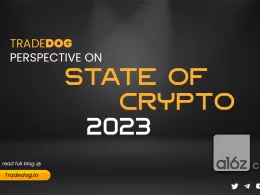Quick Links
Overview
In the past year, Ethereum shifted from PoW to PoS, allowing users to stake ETH in order to earn staking rewards. Following the news of the Shanghai hard fork which is just a month away now and aims to enable the unstaking of previously Staked ETH, liquid staking derivatives or “LSD” are attracting eyeballs in the market. Let’s dive deeper into the topic and understand what liquid staking is and why it matters.
What is Liquid Staking?
Liquidity staking allows you to use ETH as collateral and get liquidity tokens or derivative tokens (a representation of staked tokens) which can be used for staking in multiple LP pools. The main benefit of Liquid staking is that it does not lock up a user’s stake and allows users unstake the tokens anytime by depositing the staked or LP tokens back into the platform.
Take the example of Lido in this case, which is considered the go-to option when it comes to liquid staking. It enables users to stake ETH in any amount and issues stETH (LP tokens) by staking the native tokens to multiple validators. The LP tokens (in this case, stETH) can be lent out and staked in other pools to generate rewards. The amount of users’ stETH balance increases as rewards are earned by users.
In a nutshell, liquid staking is better than normal staking as it doesn’t require the locking of the staked tokens for a particular timeframe & enables users to earn derivative tokens that can be further used to generate yields.
How does Shanghai Upgrade come in?
Now that we know that in a Proof of stake mechanism, staking tokens require locking to support the network’s ops., transactions, and rewards accrual. Talking about Ethereum, to participate in validator staking a user must stake 32 ETH. Liquid staking protocols, such as Lido, Rocket Pool, and Frax, lower the entry barrier by enabling ETH holders to participate in staking without having to lock in any tokens, as many ETH holders lack the resources or technical know-how to run their own validator node.
Following the Shanghai upgrade, the network would allow the users to withdraw the staked ETH tokens. Expected to be rolled out in March ‘23, the Shanghai Upgrade integrates EIP 4895 would enable the withdrawals for staked Ethereum on the Beacon chain which has been locked since Dec ‘20. This means that the stakers could withdraw around 16 Mn staked ETH that is valued at over $21 Bn (at the current market prices).
Other features that are planned in the upgrade include EIP 3651 – essentially Warm Coinbase that has the potential to reduce the cost of block building and EIP 3855 – the addition of “PUSH0” to reduce the smart contract size. Tim Beiko, a senior official at the Ethereum Foundation, tweeted that if certain EOF (EVM Object Format) proposals are not met, they would be taken out of the Shanghai upgrade to speed up withdrawals.
How are the withdrawals on the network affected?
Unlocking the staked ETH by validators is the most noticeable development of the Shanghai upgrade. This means that the validators can freely stake or unstake their assets (ETH) on the network, and they won’t need to lock up a minimum amount (32 ETH presently).
Post the upgrade, the validators would be able to withdraw their long-staked ETH in multiple ways. One option is to make a “withdrawal credential;” for unstaking the tokens. The second option is to withdraw 32 ETH (the entire stake) and exit the beacon chain.
Although there might be a chance of massive selling pressure on the network by the investors who may anticipate earning yields by withdrawing their staked ETH and selling it for realized profits & price appreciation. However, according to data by Lookonchian, the average price of accounts with deposits under 5000 ETH is more than the current price of ETH ($2260 – avg. price/ $1643 current price). This means that investors would not prefer to sell their ETH at a loss, therefore ending the market’s perception of selling pressure.
The fact that after the Shanghai upgrade, the staked ETH can be withdrawn at any point in time reduces the risk of its de-pegging. Hence, it may attract more stakers in the space to stake and generate yields without worrying about the de-pegging & locking of funds. This would ultimately support Ethereum’s dominance in the DeFi space.
What’s Next?
It is believed that the factors like locking up of the tokens which hold back the users from participating in staking would be corrected with the Shanghai upgrade. It is also anticipated that the derivative tokens for liquid staking will become even more popular and drive a wave of confidence in the Ethereum blockchain, ultimately opening gates for wider adoption.













